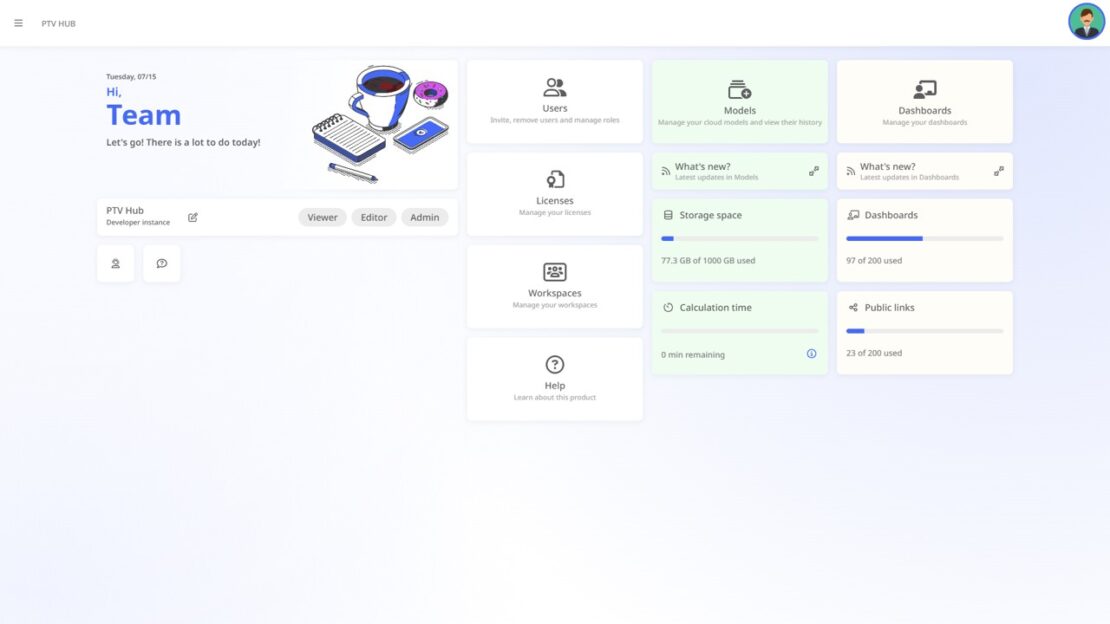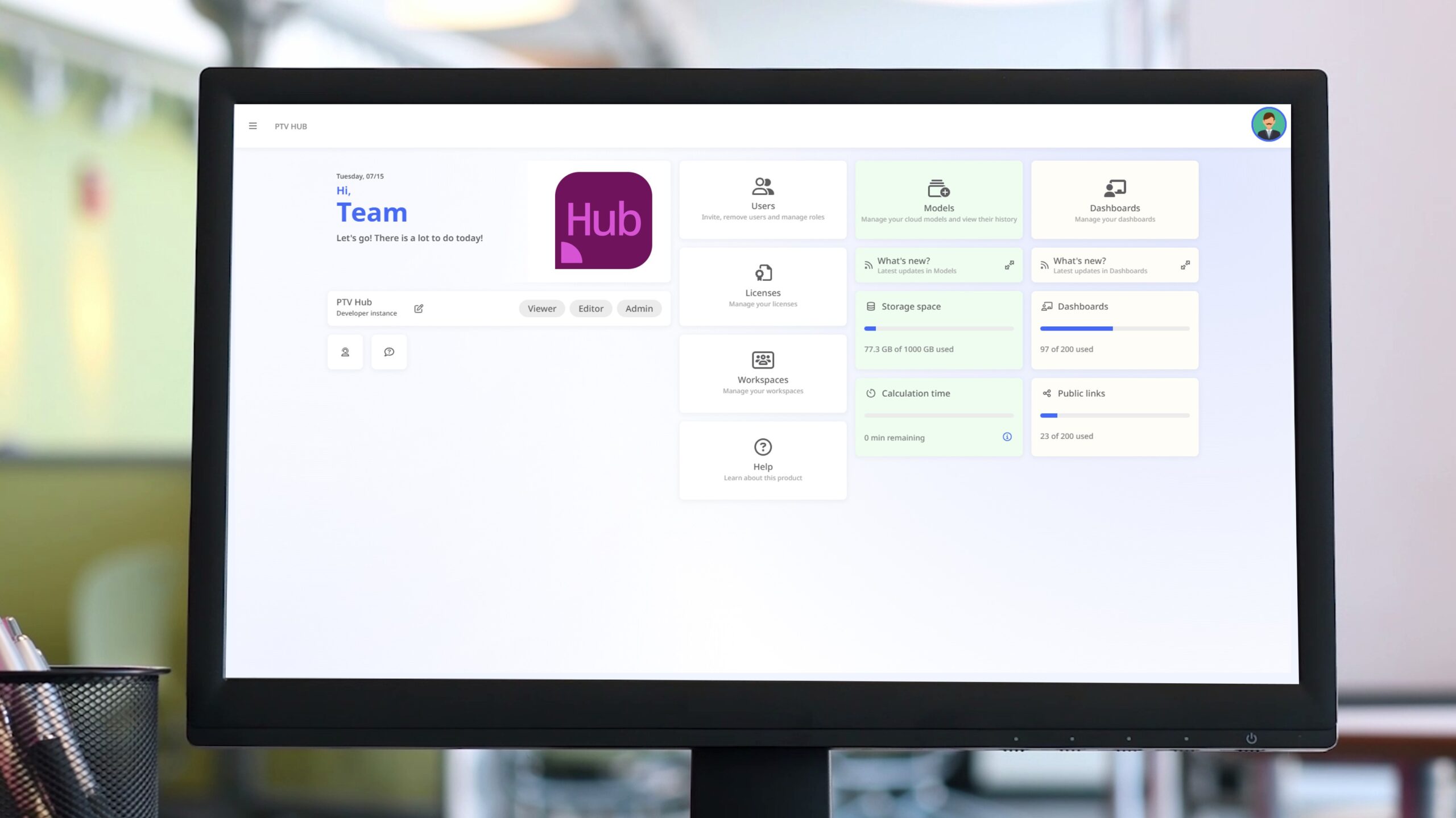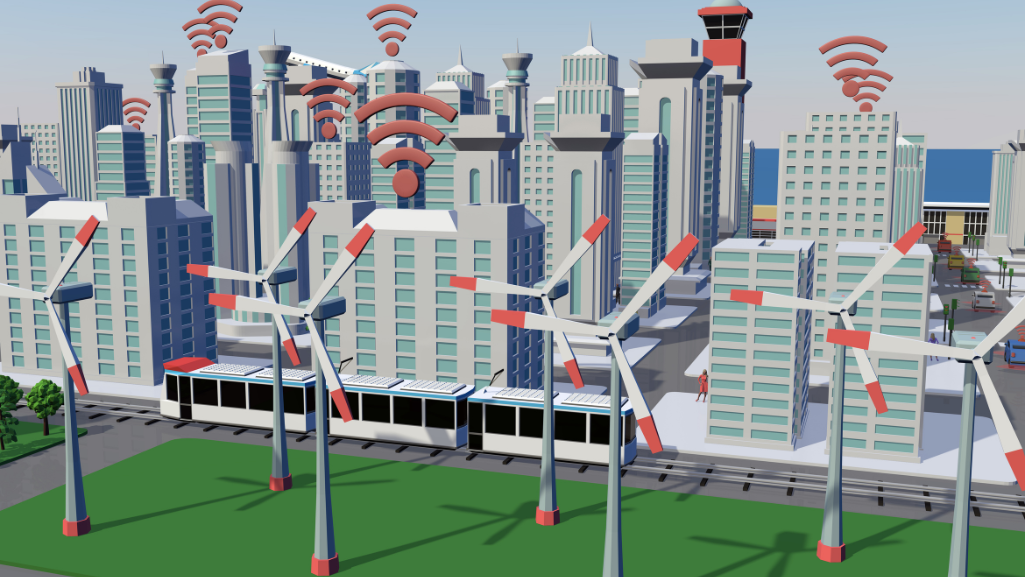Table of Contents
Why transportation planning needs to evolve
Urban transportation planners are under immense pressure. Whether it’s passenger transport, commercial transport, or freight traffic – they are expected to ensure efficient infrastructure. Simultaneously, they must promote sustainable mobility options, enable equitable access, and make city centers more livable and attractive. And all of this is supposed to be powered by smart digital technologies to create the “Smart City” of the future.
This complex mandate collides with outdated IT infrastructures, limited resources, and rising expectations from both politics and the public. Meanwhile, other sectors are rapidly advancing through digital transformation. It’s high time transportation planning also makes the leap – from siloed processes to networked, flexible workflows.
Challenges in today’s planning practice
While technology is evolving fast, many city administrations still deal with:
- Locally stored models that hinder collaboration with external stakeholders
- Overloaded computers running simulations overnight
- Lengthy coordination efforts via email or phone
- Version chaos and inconsistencies in model states
- Redundant work due to lack of transparency
These obstacles lead to delays, even for urgent measures, frustration among stakeholders, and often, less-than-optimal planning decisions.
Andreas Köglmaier, Director Public Sector DACH and an expert in transport planning solutions, explains:
“Planners are constantly balancing the needs of different road users. Finding a viable compromise for sustainable mobility is a tough job – that’s only possible with modern technology. It’s the key to creating truly sustainable solutions.”

The cloud as a catalyst for modern transportation planning
The technology already exists. However, it will only be effective if communication is seamless. Cloud technology is changing the game by providing:
- Scalable computing power: Run multiple simulations in parallel without tying up local machines.
- Centralized access: Internal and external stakeholders work on current model versions in real time.
- Data security & GDPR compliance: Hosted on certified EU servers with controlled access rights.
- Everyday flexibility: Whether in the office, at home, or on the go – planning never stops.
“Transportation planners consistently name real-time, seamless collaboration as a top priority,” Köglmaier notes. With cloud computing, users save time and resources while enjoying mobile, collaborative workflows.
PTV Hub – a behind-the-scenes look
PTV Hub is a cloud-native platform, continuously developed using fast, user-focused release cycles to optimize modeling workflows. With each update, development teams push the boundaries of what’s possible in cloud-based planning.
A major advantage: PTV Hub integrates smoothly into existing PTV modeling environments. Simulations run in the background, allowing users to continue exploring scenarios or refining visualizations without interruption.
A modern, secure cloud infrastructure enables the shared use of data environments, visualization tools, and team-based tools – across projects and geographies. Data security remains a top priority. Users can quickly connect via licenses, integrate findings into their modeling process, and significantly shorten the time from analysis to decision-making. Thus, the software provides continuous added value for traffic planning.

For city administrations, PTV Hub offers:
- Relief for IT – no installation required
- Up to 50% savings in computation time
- Greater transparency in political decision-making with intuitive dashboards
- Faster and better decision-making with instant scenario comparisons
- Long term: A collaborative digital workspace for all stakeholders – from technical experts to public consultations
Real-time collaboration: working together instead of in isolation
Sustainable and socially equitable mobility solutions are best developed as a team. That’s why real-time collaboration in the cloud is central to PTV Hub.
“Instead of sending different versions or scenarios back and forth via email, all stakeholders – from planning offices to local councils – work within the same model environment,” says Köglmaier. “Roles and permissions are clearly defined, and communication flows directly through the system. This saves time, reduces misunderstandings, and eliminates the lone-wolf approach of the past.”
PTV Hub is part of a growing platform designed for true collaboration in transport planning. Open to existing models, independent of local infrastructure, and optimized for mobile work – it’s a powerful expansion of today’s planning practice.
Because while municipal planning challenges are real, so are the opportunities provided by modern cloud-based solutions.

Are You Ready for Digital Collaboration in Transport Projects?
Testing now helps shape it.

Collaborative Cooperation in Transportation Planning
Across projects and locations – flexible and secure.



